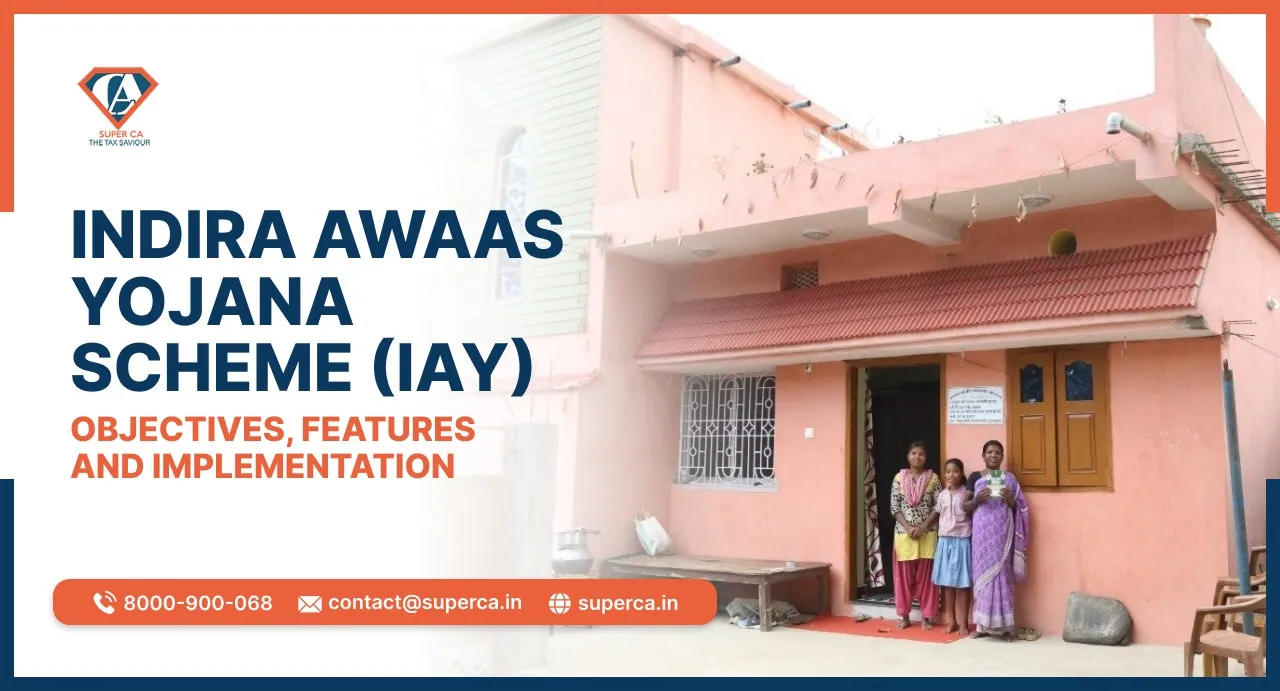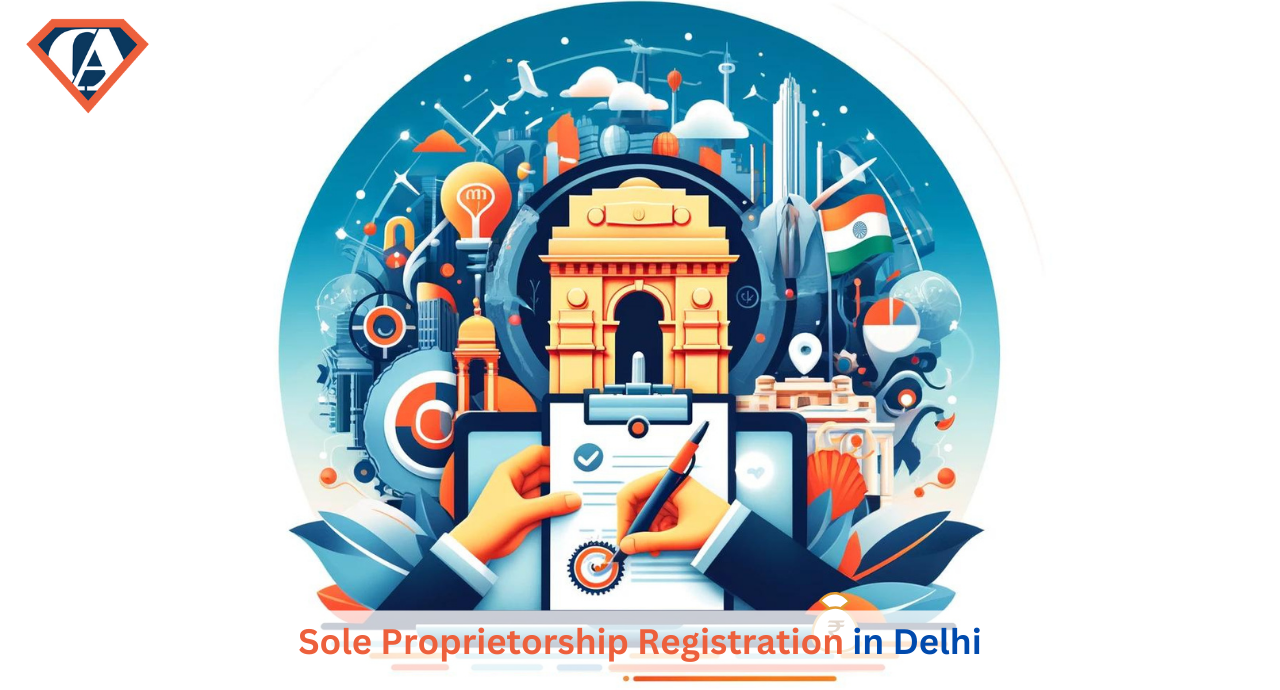Indira Awaas Yojana Scheme (IAY)| Objectives, Features and Implementation
- Posted By SuperCA
- On 08 July

The Indira Awaas Yojana (IAY) Scheme was launched by the Ministry of Rural Development and was a sub-scheme of the Rural Landless Employment Guarantee Programme (RLEGP). The main aim of the Indira Awaas Yojana (IAY) Scheme was to avail a grant in order to construct houses for people belonging to Scheduled Caste(SC) and Scheduled Tribes(ST) and freed bonded labourers and people who are below the poverty line. In this blog, we will understand the Indira Awaas Yojana (IAY) Scheme in detail.
Objectives of Indira Awaas Yojana (IAY) Scheme
The objectives of the Indira Awaas Yojana (IAY) Scheme are as follows:
- It gives support in rural areas for the construction of houses.
- It helps in the construction of houses by providing adequate provisions along with workplaces in the house.
- It helps in designing the house according to the dweller’s requirements.
- It helps in promoting the use of technology and affordable material that helps in generating employment and is sustainable and environment-friendly.
- It encourages and empowers Panchayats in taking the lead at village level to implement this housing scheme.
Important Features of Indira Awaas Yojana (IAY) Scheme
Some of the important features of the Indira Awaas Yojana (IAY) Scheme are listed below:
- Joint Ownership: The houses that are provided under the Indira Awaas Yojana (IAY) Scheme are usually under a joint ownership of both the wife and the husband. But this does not apply in the case of unmarried, divorced or widowed individuals.
- Construction: In the construction of houses under the Indira Awaas Yojana (IAY) Scheme, no contractors are involved in the construction of houses rather the beneficiary has to carry out the construction. The State Government can withdraw its funds provided for construction if the beneficiary assigns the construction of the house to a contractor.
- Technical Support: Technical and managerial assistance and support is given under the Indira Awaas Yojana (IAY) Scheme for the construction of houses. Moreover, in order to provide necessary support to the beneficiary, the services of various reputed NGOs, youth clubs and charitable trusts can be availed.
- Standards of Design and Construction: In order to improvise houses with water supply, internal and approach roads, drainage, sewerage and street lighting and social infrastructure facilities, the State Government promotes the use of eco-friendly housing techniques.
Target Group
The target group consists of those households which are below poverty line as per the Gram Sabha of the Village. The assistance of the central government also extends to those households which are headed by women, SC/ST individuals, non- SC/ST households in rural areas that are below poverty line, widows, ex-serviceman, disabled people, freed bonded labourers and the marginalised society members.
IAY’s Special Projects
The funds gathered for special projects under the Indira Awaas Yojana (IAY) Scheme are initiated for the purposes that are listed below:
- Rehabilitation of those rural families that are below the poverty line.
- In order to give settlement for free bonded labourers and manual scavengers.
- In order to provide housing to those people who got displaced
- In order to avail shelters to labourers and tribal people
- In order to provide houses to those people who were displaced due to various occupational diseases
Allocation of funds and their funding
The funds that are released to beneficiaries are shared by both the State and the Central government with a price sharing ratio of 75:25 by excluding the projects in union territories and North-Eastern regions. Hence, it is the Central Government's responsibility to provide 90% of the funds for the projects of North-east regions and for Union Territories.
The allocation of funds by the State and the Central government for beneficiaries is as follows(except for the beneficiaries located in the north-eastern region or the union territories):
- 60% funds are allocated to Sc/ST category
- 15% funds are allocated to Minorities
- 3% funds are allocated to Individuals with disabilities
The funds are allocated by the Ministry of Rural Development on the basis of the following:
- The priority is given to shortage of housing in rural regions and then to those individuals who live below the poverty line.
- For upgrading kutcha houses for those families that are below poverty line, utilization of an assistance of 20% can be done.
Implementation of Indira Awaas Yojana (IAY) Scheme
- The Zila Parishad of the DIstrict has the responsibility of implementing the scheme and if there is no zila parishad in the state, then a concerned authority that exercises the same function can take over the responsibility.
- But at a local level, the implementation of this scheme is the responsibility of the Village Panchayats. In case there are no village panchayats in a particular state, then the concerned authority which has an equivalent status will be responsible for the implementation of the scheme.
Time limit of Construction
The specified time period or limit for the completion of projects are listed below:
- The first stage or the initial level of construction should be completed within 9 months from the day of first instalment receipt.
- The second stage or the completion of the project should be done within 9 months from the day of second instalment.
Releasing of Funds
- The releasing of annual allocation of funds takes place in two instalments.
- The first instalment is provided along with a sanction letter which has 25% of the cost of the project.
- The second instalment consists of 60% of the cost of the project and is released on reaching the lintel level and the final instalment is released on the completion of the project to the beneficiary which consists of 15% of the cost of the project.
Process to release 1st instalment:
- The first instalment is released only for those who have already received a second instalment in one of the previous years.
- Those districts who did not receive a second instalment in the previous year will have to submit a proposal for the first instalment in addition to the documents that are required in order to release the second instalment for the last year.
Process to release 2nd instalment:
The funds will be released only when one of the following condition occurs:
- When up to 60% of the fund is used during the particular financial year.
- When there is a proof of completion of all the sanctioned houses within the time period of three years from the approval date.
- If the proof of completion of ¾ of all the sanctioned houses has been obtained within two years.
Payment to Beneficiary
The payments are made to the beneficiaries either via a bank account or a post office. In order to transfer the credit directly with the help of the e-FMS module, the details of the beneficiary like account number, radar number must be registered into the portal. All the payments that will be made to the beneficiary will be present at the portal and will help to track the status of balance and expenditure that is done at the District Level.
Monitoring of Indira Awaas Yojana (IAY) Scheme
The concerned authorities of the Indira Awaas Yojana are responsible for undertaking the systematic monitoring system. Under this monitoring system, various monthly and annual reports and reviews need to be submitted to the area officers of that region who visit the states and union territories allotted to them in order to check if the scheme has been functioning according to the specified guidelines.
Conclusion
In this blog, we learnt about the Indira Awaas Yojana (IAY) Scheme and its objectives and some of its most important features. We also discussed the target groups for Indira Awaas Yojana (IAY) Scheme and the various special projects that were undertaken by the scheme. We studied in brief about the funding and allocation of funds and the scheme implementation and the releasing of funds and the payments that are made to the beneficiaries of the Indira Awaas Yojana (IAY) Scheme.





